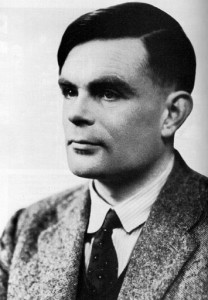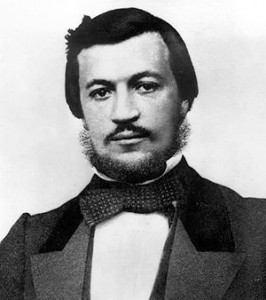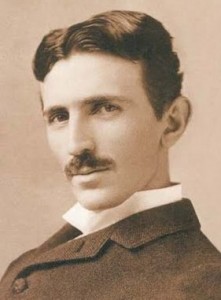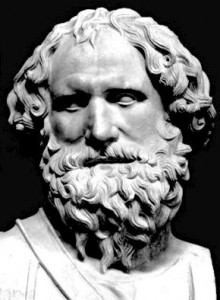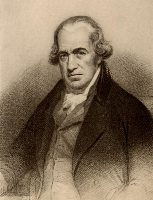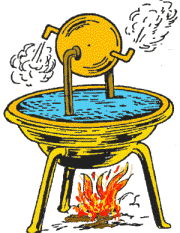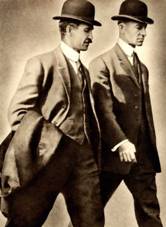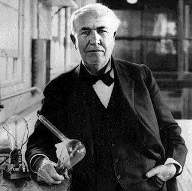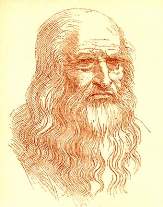Mechanical engineering is a discipline of
engineering that applies the principles of engineering, physics and materials
science for analysis, design, manufacturing, and maintenance of mechanical
systems. It is the branch of engineering that involves the production and usage
of heat and mechanical power for the design, production, and operation of
machines and tools. It is one of the oldest and broadest engineering
disciplines.
The engineering field requires an
understanding of core concepts including mechanics, kinematics, thermodynamics,
materials science, structural analysis, and electricity. Mechanical engineers
use these core principles along with tools like computer-aided engineering, and
product life-cycle management to design and analyze manufacturing plants,
industrial equipment and machinery, heating and cooling systems, transport
systems, aircraft, watercraft, robotics, medical devices, weapons, and others.
Mechanical engineering emerged as a field
during the industrial revolution in Europe in the 18th century; however, its
development can be traced back several thousand years around the world.
Mechanical engineering science emerged in the 19th century as a result of
developments in the field of physics. The field has continually evolved to incorporate
advancements in technology, and mechanical engineers today are pursuing
developments in such fields as composites, mechatronics, and nanotechnology.
Mechanical engineering overlaps with aerospace engineering, metallurgical
engineering, civil engineering, electrical engineering, petroleum engineering,
manufacturing engineering, chemical engineering, and other engineering
disciplines to varying amounts. Mechanical engineers may also work in the field
of Biomedical engineering, specifically with bio mechanics, transport phenomena,
bio mechatronics, bio nanotechnology and modelling of biological systems, like
soft tissue mechanics.
Contents
•1 Development
•2 Education◦2.1 Coursework
◦2.2 License
◦2.3 University and Institutions
•3 Salaries and workforce statistics
•4 Modern tools
•5 Sub disciplines◦5.1 Mechanics
◦5.2 Mechatronics and robotics
◦5.3 Structural analysis
◦5.4 Thermodynamics and Thermos-science
◦5.5 Design and drafting
•6 Frontiers of research◦6.1 Micro
electro-mechanical systems (MEMS)
◦6.2 Friction stir welding (FSW)
◦6.3 Composites
◦6.4 Mechatronics
◦6.5 Nanotechnology
◦6.6 Finite element analysis
◦6.7 Biomechanics
◦6.8 Computational fluid dynamics
◦6.9 Acoustical engineering
•7 related fields
•8 See also
•9 Notes and references
•10 further reading
•11 External links
Development
Mechanical engineers design and build
engines, power plants...
...structures, and vehicles of all sizes.
Mechanical engineering finds its
application in the archives of various ancient and medieval societies
throughout mankind. In ancient Greece, the works of Archimedes (287 BC–212 BC)
deeply influenced mechanics in the Western tradition and Heron of Alexandria
(c. 10–70 AD) created the first steam engine.[2] In China, Zhang Heng (78–139
AD) improved a water clock and invented a seismometer, and Ma Jun (200–265 AD)
invented a chariot with differential gears. The medieval Chinese horologist and
engineer Su Song (1020–1101 AD) incorporated an escapement mechanism into his
astronomical clock tower two centuries before any escapement can be found in
clocks of medieval Europe, as well as the world's first known endless
power-transmitting chain drive.[3]
During the years from 7th to 15th century,
the era called the Islamic Golden Age; there were remarkable contributions from
Muslim inventors in the field of mechanical technology. Al-Jazari, who was one
of them, wrote his famous Book of Knowledge of Ingenious Mechanical Devices in
1206, and presented many mechanical designs. He is also considered to be the
inventor of such mechanical devices which now form the very basic of
mechanisms, such as the crankshaft and camshaft.
Important breakthroughs in the foundations
of mechanical engineering occurred in England during the 17th century when Sir
Isaac Newton both formulated the three Newton's Laws of Motion and developed
Calculus, the mathematical basis of physics. Newton was reluctant to publish
his methods and laws for years, but he was finally persuaded to do so by his
colleagues, such as Sir Edmund Halley, much to the benefit of all mankind.
Gottfried Wilhelm Leibniz is also credited with creating Calculus during the
same time frame.
During the early 19th century in England,
Germany and Scotland, the development of machine tools led mechanical
engineering to develop as a separate field within engineering, providing
manufacturing machines and the engines to power them.[5] The first British
professional society of mechanical engineers was formed in 1847 Institution of
Mechanical Engineers, thirty years after the civil engineers formed the first
such professional society Institution of Civil Engineers.[6] On the European
continent, Johann Von Zimmermann (1820–1901) founded the first factory for
grinding machines in Chemnitz, Germany in 1848.
In the United States, the American Society
of Mechanical Engineers (ASME) was formed in 1880, becoming the third such
professional engineering society, after the American Society of Civil Engineers
(1852) and the American Institute of Mining Engineers (1871). The first schools
in the United States to offer an engineering education were the United States
Military Academy in 1817, an institution now known as Norwich University in
1819, and Rensselaer Polytechnic Institute in 1825. Education in mechanical
engineering has historically been based on a strong foundation in mathematics
and science.
Education
Degrees in mechanical engineering are
offered at universities worldwide. In Brazil, Ireland, Philippines, Pakistan,
China, Greece, Turkey, North America, South Asia, India, Dominican Republic and
the United Kingdom, mechanical engineering programs typically take four to five
years of study and result in a Bachelor of Engineering (B.Eng.), Bachelor of
Science (B.Sc.), Bachelor of Science Engineering (B.ScEng), Bachelor of
Technology (B.Tech), or Bachelor of Applied Science (B.A.Sc.) degree, in or
with emphasis in mechanical engineering. In Spain, Portugal and most of South
America, where neither BSc nor B.Tech programs have been adopted, the formal
name for the degree is "Mechanical Engineer", and the course work is
based on five or six years of training. In Italy the course work is based on
five years of training, but in order to qualify as an Engineer you have to pass
a state exam at the end of the course. In Greece, the coursework is based on a
five year curriculum and the requirement of a 'Diploma' Thesis, which upon
completion a 'Diploma' is awarded rather than a B.Sc.
In Australia, mechanical engineering
degrees are awarded as Bachelor of Engineering (Mechanical) or similar nomenclature
[9] although there are an increasing number of specialisations. The degree
takes four years of full-time study to achieve. To ensure quality in
engineering degrees, Engineers Australia accredits engineering degrees awarded
by Australian universities in accordance with the global Washington Accord.
Before the degree can be awarded, the student must complete at least 3 months
of on the job work experience in an engineering firm. Similar systems are also
present in South Africa and are overseen by the Engineering Council of South
Africa (ECSA).
In the United States, most undergraduate
mechanical engineering programs are accredited by the Accreditation Board for
Engineering and Technology (ABET) to ensure similar course requirements and
standards among universities. The ABET web site lists 302 accredited mechanical
engineering programs as of 11 March 2014.[10] Mechanical engineering programs
in Canada are accredited by the Canadian Engineering Accreditation Board
(CEAB),[11] and most other countries offering engineering degrees have similar
accreditation societies.
Some mechanical engineers go on to pursue a
postgraduate degree such as a Master of Engineering, Master of Technology,
Master of Science, Master of Engineering Management (MEng.Mgt or MEM), a Doctor
of Philosophy in engineering (EngD, PhD) or an engineer's degree. The master's
and engineer's degrees may or may not include research. The Doctor of
Philosophy includes a significant research component and is often viewed as the
entry point to academia. The Engineer's degree exists at a few institutions at
an intermediate level between the master's degree and the doctorate.
Coursework
Standards set by
each country's accreditation society are intended to provide uniformity in
fundamental subject material, promote competence among graduating engineers,
and to maintain confidence in the engineering profession as a whole.
Engineering programs in the U.S., for example, are required by ABET to show
that their students can "work professionally in both thermal and
mechanical systems areas. The specific courses required to graduate, however,
may differ from program to program. Universities and Institutes of technology
will often combine multiple subjects into a single class or split a subject
into multiple classes, depending on the faculty available and the university's
major area(s) of research.
The fundamental
subjects of mechanical engineering usually include:
- Mathematics (in particular, calculus,
differential equations, and linear algebra)
- Basic physical sciences (including
physics and chemistry)
- Statics and dynamics
- Strength of materials and solid
mechanics
- Materials Engineering, Composites
- Thermodynamics, heat transfer, energy
conversion, and HVAC
- Fuels, combustion, Internal
combustion engine
- Fluid mechanics (including fluid
statics and fluid dynamics)
- Mechanism and Machine design
(including kinematics and dynamics)
- Instrumentation and measurement
- Manufacturing engineering,
technology, or processes
- Vibration, control theory and control
engineering
- Hydraulics, and pneumatics
- Mechatronics, and robotics
- Engineering design and product design
- Drafting, computer-aided design (CAD)
and computer-aided manufacturing (CAM)
Mechanical
engineers are also expected to understand and be able to apply basic concepts
from chemistry, physics, chemical engineering, civil engineering, and
electrical engineering. All mechanical engineering programs include multiple
semesters of mathematical classes including calculus, and advanced mathematical
concepts including differential equations, partial differential equations,
linear algebra, abstract algebra, and differential geometry, among others.
In addition to
the core mechanical engineering curriculum, many mechanical engineering
programs offer more specialized programs and classes, such as control systems,
robotics, transport and logistics, cryogenics, fuel technology, automotive
engineering, biomechanics, vibration, optics and others, if a separate
department does not exist for these subjects.
Most mechanical
engineering programs also require varying amounts of research or community
projects to gain practical problem-solving experience. In the United States it
is common for mechanical engineering students to complete one or more
internships while studying, though this is not typically mandated by the
university. Cooperative education is another option. Future work skills
research puts demand on study components that feed student's creativity and
innovation.
License
Engineers may
seek license by a state, provincial, or national government. The purpose of
this process is to ensure that engineers possess the necessary technical
knowledge, real-world experience, and knowledge of the local legal system to
practice engineering at a professional level. Once certified, the engineer is
given the title of Professional Engineer (in the United States, Canada, Japan,
South Korea, Bangladesh and South Africa), Chartered Engineer (in the United
Kingdom, Ireland, India and Zimbabwe), Chartered Professional Engineer
(in Australia and New Zealand) or European Engineer (much of the
European Union) Registered Engineer or Professional Engineer in Philippines and
Pakistan. The Chartered Engineer and European Engineer are not licenses to practice
- they are qualifications
In the U.S., to
become a licensed Professional Engineer, an engineer must pass the
comprehensive FE (Fundamentals of Engineering) exam, work a given number of
years as an Engineering Intern (EI) or Engineer-in-Training (EIT),
and finally pass the "Principles and Practice" or PE (Practicing Engineer
or Professional Engineer) exams.
In the United
States, the requirements and steps of this process are set forth by the
National Council of Examiners for Engineering and Surveying (NCEES), a composed
of engineering and land surveying licensing boards representing all U.S. states
and territories. In the UK, current graduates require a BEng plus an
appropriate master’s degree or an integrated MEng degree, a minimum of 4 years
post graduate on the job competency development, and a peer reviewed project
report in the candidate’s specialty area in order to become chartered through
the Institution of Mechanical Engineers.
In most modern
countries, certain engineering tasks, such as the design of bridges, electric
power plants, and chemical plants, must be approved by a Professional Engineer
or a Chartered Engineer. "Only a licensed engineer, for instance, may
prepare, sign, seal and submit engineering plans and drawings to a public
authority for approval, or to seal engineering work for public and private clients."
This requirement can be written into state and provincial legislation, such as
in the Canadian provinces, for example the Ontario or Quebec's Engineer Act.
In other
countries, such as Australia, no such legislation exists; however, practically
all certifying bodies maintain a code of ethics independent of legislation that
they expect all members to abide by or risk expulsion.
Further
information: FE Exam, Professional Engineer, Incorporated
Engineer, and Washington Accord
University and
Institutions
Many technical
boards, university, and professional institutions offer mechanical engineering
courses in India for regular and distance learning. Since 2001, technical
education has made progress in India; therefore the government of India has
opened many universities and professional institutions to fulfill the
requirements for private and public sectors. Indian Institutions of Engineers
(IIE) in Delhi, Institution of Electrical Engineers (IEE) in Delhi, Institution
of Mechanical Engineers (IME) in Mumbai, and Institution of Civil Engineers
(ICE) in Punjab are professional institutions spreading global technical
education.[
Salaries and
workforce statistics
The total number
of engineers employed in the U.S. in 2009 was roughly 1.6 million. Of these,
239,000 were mechanical engineers (14.9%), the second largest discipline by
size behind civil (278,000). The total number of mechanical engineering jobs in
2009 was projected to grow 6% over the next decade, with average starting
salaries being $58,800 with a bachelor's degree. The median annual income of mechanical
engineers in the U.S. workforce was $80,580. The median income was highest when
working for the government ($92,030), and lowest in education ($57,090) as of
2012.
In 2007, Canadian
engineers made an average of C$29.83 per hour with 4% unemployed. The average
for all occupations was $18.07 per hour with 7% unemployed. Twelve percent of
these engineers were self-employed, and since 1997 the proportion of female
engineers had risen to 6%.
Modern tools
An oblique view of a four-cylinder inline
crankshaft with pistons
Many mechanical engineering companies,
especially those in industrialized nations, have begun to incorporate
computer-aided engineering (CAE) programs into their existing design and
analysis processes, including 2D and 3D solid modelling computer-aided design
(CAD). This method has many benefits, including easier and more exhaustive
visualization of products, the ability to create virtual assemblies of parts,
and the ease of use in designing mating interfaces and tolerances.
Other CAE programs commonly used by
mechanical engineers include product lifecycle management (PLM) tools and
analysis tools used to perform complex simulations. Analysis tools may be used
to predict product response to expected loads, including fatigue life and
manufacturability. These tools include finite element analysis (FEA),
computational fluid dynamics (CFD), and computer-aided manufacturing (CAM).
Using CAE programs, a mechanical design
team can quickly and cheaply iterate the design process to develop a product
that better meets cost, performance, and other constraints. No physical
prototype need be created until the design nears completion, allowing hundreds
or thousands of designs to be evaluated, instead of a relative few. In
addition, CAE analysis programs can model complicated physical phenomena which
cannot be solved by hand, such as viscoelasticity, complex contact between
mating parts, or non-Newtonian flows.
As mechanical engineering begins to merge
with other disciplines, as seen in mechatronics, multidisciplinary design
optimization (MDO) is being used with other CAE programs to automate and
improve the iterative design process. MDO tools wrap around existing CAE
processes, allowing product evaluation to continue even after the analyst goes
home for the day. They also utilize sophisticated optimization algorithms to
more intelligently explore possible designs, often finding better, innovative
solutions to difficult multidisciplinary design problems.
Sub
disciplines
The field of mechanical engineering can be
thought of as a collection of many mechanical engineering science disciplines.
Several of these sub disciplines which are typically taught at the
undergraduate level are listed below, with a brief explanation and the most
common application of each. Some of these sub disciplines are unique to
mechanical engineering, while others are a combination of mechanical
engineering and one or more other disciplines. Most work that a mechanical
engineer does uses skills and techniques from several of these sub disciplines,
as well as specialized sub disciplines. Specialized sub disciplines, as used in
this article, are more likely to be the subject of graduate studies or
on-the-job training than undergraduate research. Several specialized sub
disciplines are discussed in this section.
Mechanics
Mohr's circle, a common tool to study stresses in a
mechanical element
Mechanics is, in the most general sense, the study of
forces and their effect upon matter. Typically, engineering mechanics is used
to analyse and predict the acceleration and deformation (both elastic and
plastic) of objects under known forces (also called loads) or stresses. Sub
disciplines of mechanics include
•Statics, the study of non-moving bodies under known
loads, how forces affect static bodies
•Dynamics (or kinetics), the study of how forces
affect moving bodies
•Mechanics of materials, the study of how different
materials deform under various types of stress
•Fluid mechanics, the study of how fluids react to
forces
•Kinematics, the study of the motion of bodies
(objects) and systems (groups of objects), while ignoring the forces that cause
the motion. Kinematics is often used in the design and analysis of mechanisms.
•Continuum mechanics, a method of applying mechanics
that assumes that objects are continuous (rather than discrete)
Mechanical engineers typically use mechanics in the
design or analysis phases of engineering. If the engineering project were the
design of a vehicle, statics might be employed to design the frame of the
vehicle, in order to evaluate where the stresses will be most intense. Dynamics
might be used when designing the car's engine, to evaluate the forces in the
pistons and cams as the engine cycles. Mechanics of materials might be used to
choose appropriate materials for the frame and engine. Fluid mechanics might be
used to design a ventilation system for the vehicle (see HVAC), or to design
the intake system for the engine.
Mechatronics
and robotics
Training FMS with learning robot SCORBOT-ER 4u,
workbench CNC Mill and CNC Lathe
Mechatronics is an interdisciplinary branch of
mechanical engineering, electrical engineering and software engineering that is
concerned with integrating electrical and mechanical engineering to create
hybrid systems. In this way, machines can be automated through the use of
electric motors, servo-mechanisms, and other electrical systems in conjunction
with special software. A common example of a mechatronics system is a CD-ROM
drive. Mechanical systems open and close the drive, spin the CD and move the
laser, while an optical system reads the data on the CD and converts it to
bits. Integrated software controls the process and communicates the contents of
the CD to the computer.
Robotics is the application of mechatronics to create
robots, which are often used in industry to perform tasks that are dangerous,
unpleasant, or repetitive. These robots may be of any shape and size, but all
are preprogramed and interact physically with the world. To create a robot, an
engineer typically employs kinematics (to determine the robot's range of
motion) and mechanics (to determine the stresses within the robot).
Robots are used extensively in industrial engineering.
They allow businesses to save money on labour, perform tasks that are either
too dangerous or too precise for humans to perform them economically, and to
ensure better quality. Many companies employ assembly lines of robots,
especially in Automotive Industries and some factories are so robotized that
they can run by themselves. Outside the factory, robots have been employed in
bomb disposal, space exploration, and many other fields. Robots are also sold
for various residential applications, from recreation to domestic applications.
Structural analysis
Structural analysis is the branch of mechanical
engineering (and also civil engineering) devoted to examining why and how
objects fail and to fix the objects and their performance. Structural failures
occur in two general modes: static failure, and fatigue failure. Static
structural failure occurs when, upon being loaded (having a force applied) the
object being analysed either breaks or is deformed plastically, depending on
the criterion for failure. Fatigue failure occurs when an object fails after a
number of repeated loading and unloading cycles. Fatigue failure occurs because
of imperfections in the object: a microscopic crack on the surface of the
object, for instance, will grow slightly with each cycle (propagation) until
the crack is large enough to cause ultimate failure.
Failure is not simply defined as when a part breaks,
however; it is defined as when a part does not operate as intended. Some
systems, such as the perforated top sections of some plastic bags, are designed
to break. If these systems do not break, failure analysis might be employed to
determine the cause.
Structural analysis is often used by mechanical
engineers after a failure has occurred, or when designing to prevent failure. Engineers
often use online documents and books such as those published by ASM to aid them
in determining the type of failure and possible causes.
Structural analysis may be used in the office when
designing parts, in the field to analyse failed parts, or in laboratories where
parts might undergo controlled failure tests.
Thermodynamics and thermo-science
Thermodynamics is an applied science used in several
branches of engineering, including mechanical and chemical engineering. At its
simplest, thermodynamics is the study of energy, its use and transformation
through a system. Typically, engineering thermodynamics is concerned with
changing energy from one form to another. As an example, automotive engines
convert chemical energy (enthalpy) from the fuel into heat, and then into
mechanical work that eventually turns the wheels.
Thermodynamics principles are used by mechanical
engineers in the fields of heat transfer, thermo fluids, and energy conversion.
Mechanical engineers use thermo-science to design engines and power plants,
heating, ventilation, and air-conditioning (HVAC) systems, heat exchangers,
heat sinks, radiators, refrigeration, insulation, and others.
Design and drafting
A CAD model of a mechanical double seal
Drafting or technical drawing is the means by which
mechanical engineers design products and create instructions for manufacturing
parts. A technical drawing can be a computer model or hand-drawn schematic
showing all the dimensions necessary to manufacture a part, as well as assembly
notes, a list of required materials, and other pertinent information. A U.S.
mechanical engineer or skilled worker who creates technical drawings may be
referred to as a drafter or draftsman. Drafting has historically been a
two-dimensional process, but computer-aided design (CAD) programs now allow the
designer to create in three dimensions.
Instructions for manufacturing a part must be fed to
the necessary machinery, either manually, through programmed instructions, or
through the use of a computer-aided manufacturing (CAM) or combined CAD/CAM
program. Optionally, an engineer may also manually manufacture a part using the
technical drawings, but this is becoming an increasing rarity, with the advent
of computer numerically controlled (CNC) manufacturing. Engineers primarily
manually manufacture parts in the areas of applied spray coatings, finishes,
and other processes that cannot economically or practically be done by a
machine.
Drafting is used in nearly every sub discipline of
mechanical engineering, and by many other branches of engineering and
architecture. Three-dimensional models created using CAD software are also
commonly used in finite element analysis (FEA) and computational fluid dynamics
(CFD).
Frontiers of research
Mechanical engineers are constantly pushing the
boundaries of what is physically possible in order to produce safer, cheaper,
and more efficient machines and mechanical systems. Some technologies at the
cutting edge of mechanical engineering are listed below (see also exploratory
engineering).
Micro electro-mechanical systems (MEMS)
Micron-scale mechanical components such as springs,
gears, fluidic and heat transfer devices are fabricated from a variety of substrate
materials such as silicon, glass and polymers like SU8. Examples of MEMS
components are the accelerometers that are used as car airbag sensors, modern
cell phones, gyroscopes for precise positioning and microfluidic devices used
in biomedical applications.
Friction stir welding (FSW)
Friction stir welding, a new type of welding, was
discovered in 1991 by The Welding Institute (TWI). The innovative steady state
(non-fusion) welding technique joins materials previously un-wieldable,
including several aluminium alloys. It plays an important role in the future
construction of airplanes, potentially replacing rivets. Current uses of this
technology to date include welding the seams of the aluminium main Space
Shuttle external tank, Orion Crew Vehicle test article, Boeing Delta II and
Delta IV Expendable Launch Vehicles and the Space X Falcon 1 rocket, armour
plating for amphibious assault ships, and welding the wings and fuselage panels
of the new Eclipse 500 aircraft from Eclipse Aviation among an increasingly
growing pool of uses.
Composites
Composite cloth consisting of woven carbon fibre
Composites or composite materials are a combination of
materials which provide different physical characteristics than either material
separately. Composite material research within mechanical engineering typically
focuses on designing (and, subsequently, finding applications for) stronger or
more rigid materials while attempting to reduce weight, susceptibility to
corrosion, and other undesirable factors. Carbon fibre reinforced composites,
for instance, have been used in such diverse applications as spacecraft and
fishing rods.
Mechatronics
Mechatronics is the synergistic combination of
mechanical engineering, Electronic Engineering, and software engineering. The
purpose of this interdisciplinary engineering field is the study of automation
from an engineering perspective and serves the purposes of controlling advanced
hybrid systems.
Nanotechnology
At the smallest scales, mechanical engineering becomes
nanotechnology —one speculative goal of which is to create a molecular
assembler to build molecules and materials via mechanosynthesis. For now that
goal remains within exploratory engineering. Areas of current mechanical
engineering research in nanotechnology include Nano filters,[29] Nano films,
and nanostructures, among others.
Finite element analysis
Main article: Finite element analysis
This field is not new, as the basis of Finite Element
Analysis (FEA) or Finite Element Method (FEM) dates back to 1941. But evolution
of computers has made FEA/FEM a viable option for analysis of structural
problems. Many commercial codes such as ANSYS, Nastran and ABAQUS are widely
used in industry for research and design of components. Calculix is an open
source and free finite element program. Some 3D modelling and CAD software
packages have added FEA modules.
Other techniques such as finite difference method
(FDM) and finite-volume method (FVM) are employed to solve problems relating
heat and mass transfer, fluid flows, fluid surface interaction etc.
Biomechanics
Biomechanics is the application of mechanical
principles to biological systems, such as humans, animals, plants, organs, and
cells. Biomechanics also aids in creating prosthetic limbs and artificial
organs for humans.
Biomechanics is closely related to engineering,
because it often uses traditional engineering sciences to analyse biological systems.
Some simple applications of Newtonian mechanics and/or materials sciences can
supply correct approximations to the mechanics of many biological systems.
Computational fluid dynamics[edit]
Main article: Computational fluid dynamics
Computational fluid dynamics, usually abbreviated as
CFD, is a branch of fluid mechanics that uses numerical methods and algorithms
to solve and analyze problems that involve fluid flows. Computers are used to
perform the calculations required to simulate the interaction of liquids and
gases with surfaces defined by boundary conditions. With high-speed
supercomputers, better solutions can be achieved. Ongoing research yields
software that improves the accuracy and speed of complex simulation scenarios
such as transonic or turbulent flows. Initial validation of such software is
performed using a wind tunnel with the final validation coming in full-scale
testing, e.g. flight tests.
Acoustical engineering
Main article: Acoustical engineering
Acoustical engineering is one of many other sub
disciplines of mechanical engineering and is the application of acoustics.
Acoustical engineering is the study of Sound and Vibration. These engineers
work effectively to reduce noise pollution in mechanical devices and in
buildings by soundproofing or removing sources of unwanted noise. The study of
acoustics can range from designing a more efficient hearing aid, microphone,
headphone, or recording studio to enhancing the sound quality of an orchestra
hall. Acoustical engineering also deals with the vibration of different
mechanical systems

